Overview
Introduction
In this assignment, I will investigate various career options within the games industry, and find what they do, before coming to a final choice on what path I’d like to follow.
Potential Career Options
In the games industry, there is a lot of varied roles you can be depending how artistic you want to be, or how technological you want to be.
Games Programmer
A games programmer creates the majority of the gameplay within a game. This can range from simple things like throwing a grenade, aiming a gun and firing it, or a fully functional wall running system. A game cannot function without a games programmer. This creates a permanent demand for them.
Someone in this role will need to have proficiency in some popular games engine like Unreal Engine, Unity or Godot, have the knowledge on how to work with a proprietary engine should it be relevant, as well as how to write code in popular scripting languages such as C++, C#, and Lua.
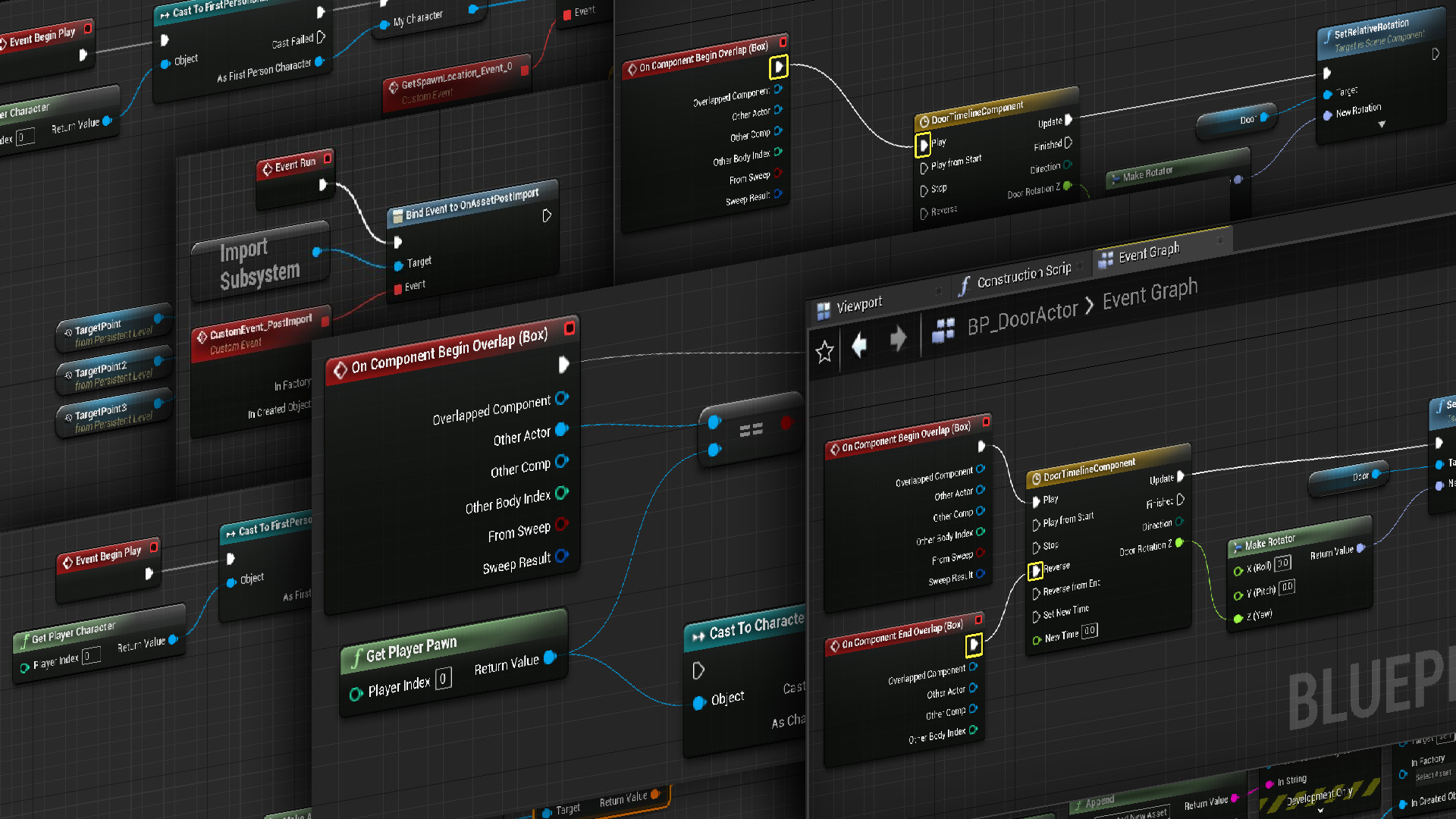
Examples
Titanfall 2 - Movement
The movement in Titanfall 2 goes down as one of the best movement shooter games ever created. The wall running feels long enough to where you feel confident enough to make risky plays, but short enough to where you still have some danger to it; that paired with the environment moving around you, enemies firing at you, and not trying to die to the void below you creates for a perfectly chaotic gameplay.
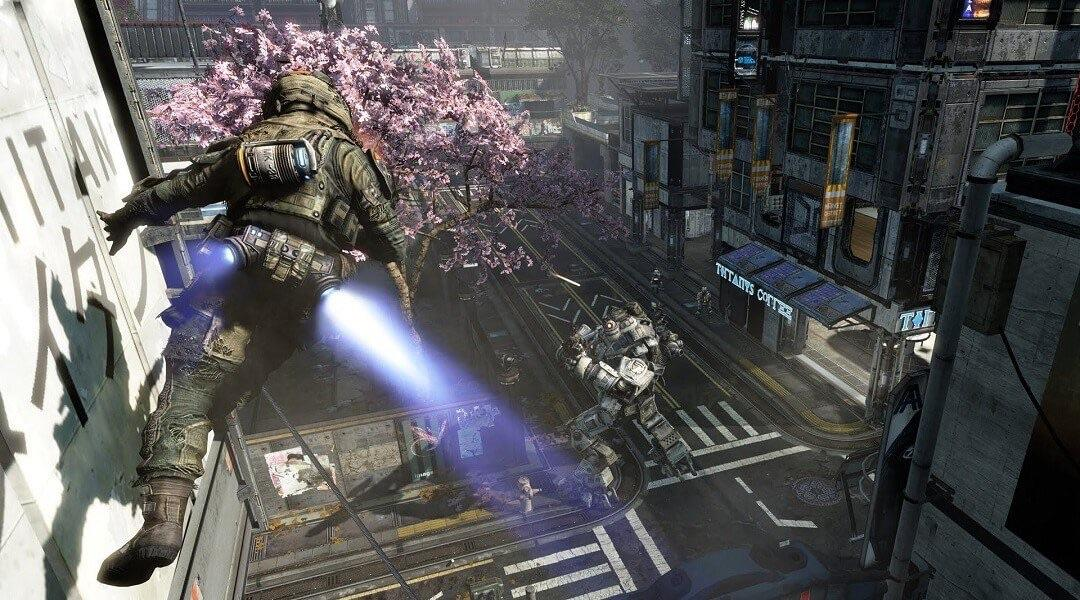
Some potential problems with this system from both a gameplay and level aspect would be players using the wall running to sequence break and access areas of the level they shouldn’t be able to at that point, which if the games programmer hasn’t added protection for can create a potential ‘issue’ depending how you view breaking sequence.
A way I could see to fix a sequence break would be to add an invisible wall, a death box, or something to softlock the player for trying to break sequence, such as a check to see if they’ve triggered various triggers whether its a cutscene, an animation or a line of dialogue set to trigger at a specific time/area.
Ghostrunner - Abilities and Movement
In Ghostrunner, you play as a Ghostrunner, a technically advanced superhuman who’s primary objective is to climb Dharma Tower and defeat the Keymaster. You must navigate the tower which is split by floors similar to a class system, the lower you go, the worse the conditions are and the less complex the architecture is.
The ability system in Ghostrunner uses a tetramino style puzzle where you can have as many skills as you can fit into the grid.
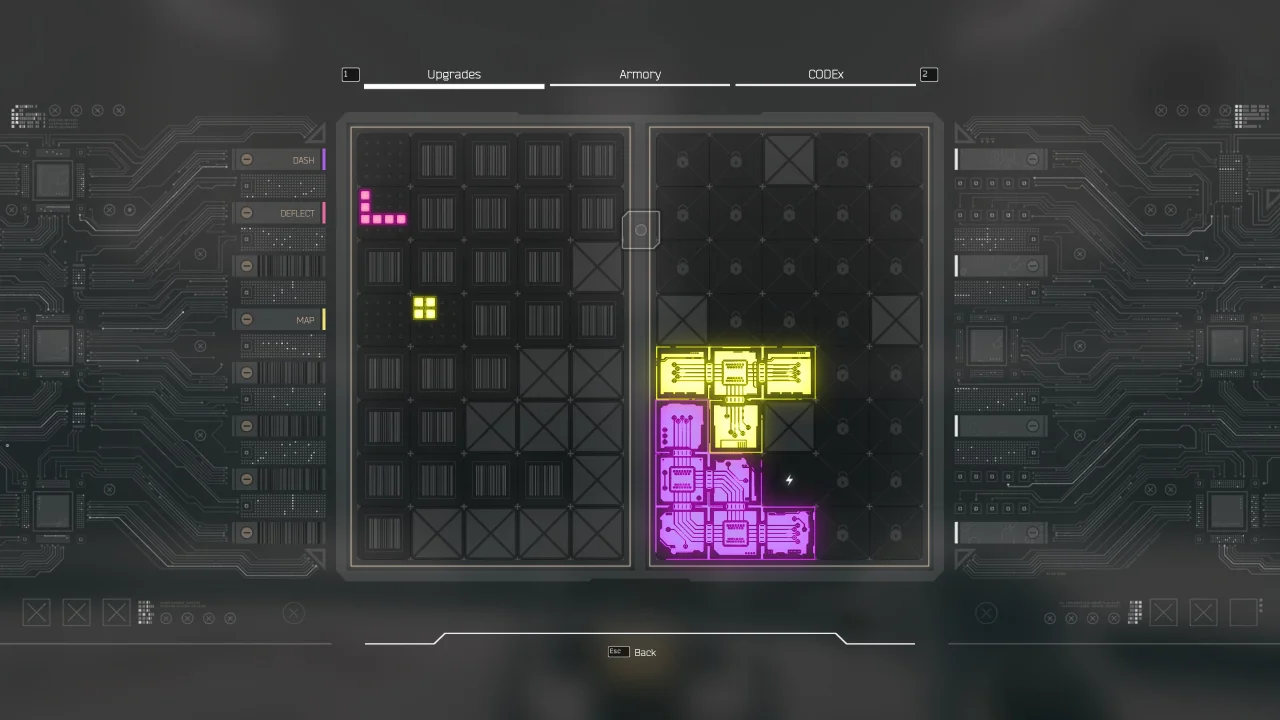
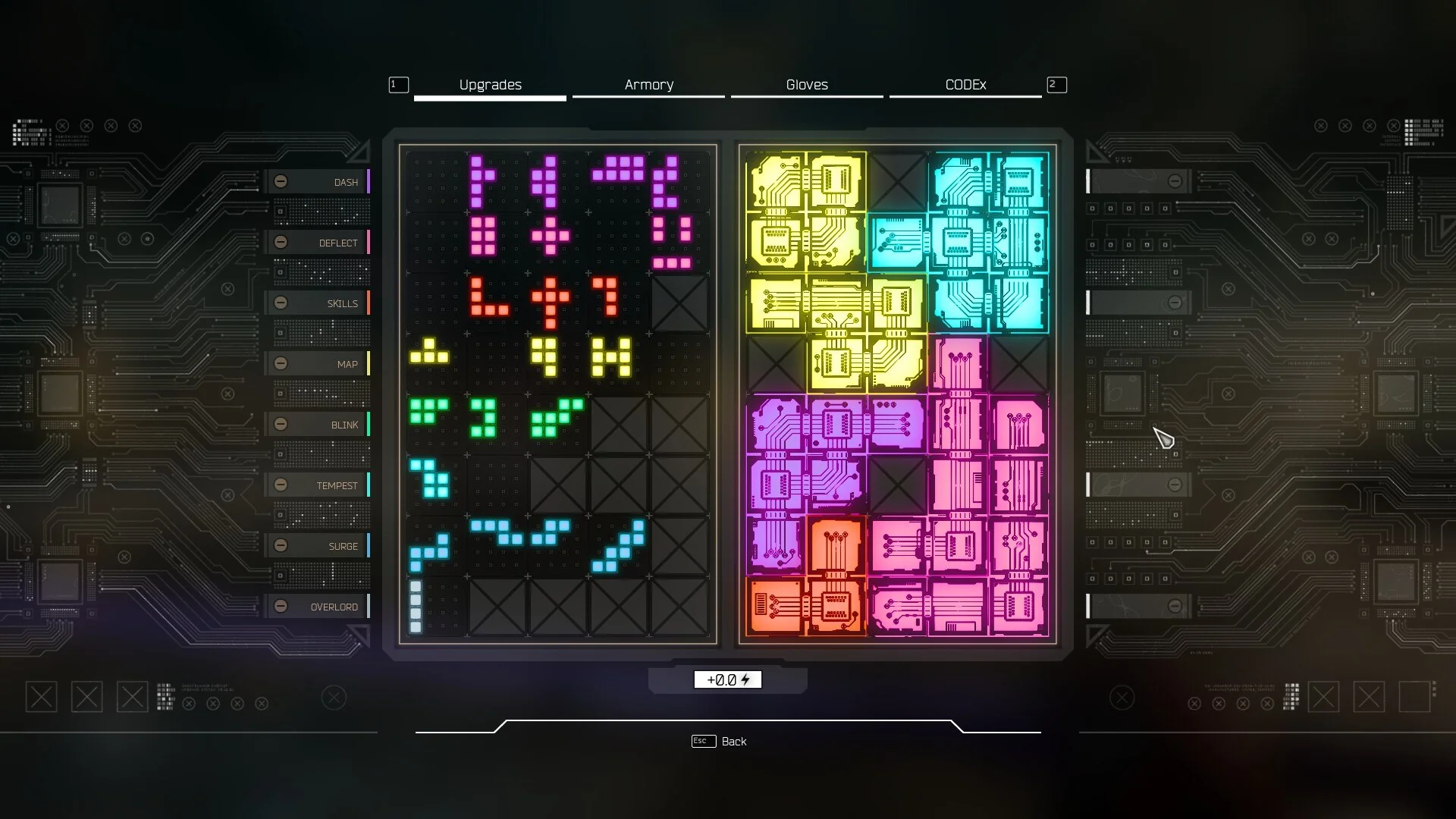
This system leaves a lot up to the player to change how they like to play. For example, some players might really like the Dash ability, so they will put more pieces related to the Dash ability into the grid opposed to someone who really likes the Blink ability.
A problem I could imagine the developers having is a balancing issue, where you have to make every ability scaled to where no one ability has a clear advantage and overshadows every other one. One way to fix this is to make some abilities worse by default intentionally and offer a very good upgrade to make it more attractive to use.
Environment Artist
An environment artist is someone who must aim to create a world navigable by the player and a logical and cohesive manner. This ranges from the sky, the ground, and everything in-between. An environment artist typically uses concept art provided by a concept artist to create these areas, usually expanding and breathing more life into it compared to the concepts.
A good environment artist can highlight important things in the environment without directly telling the player directly that the area in front of them is dangerous and you’ll probably die; instead, they do it through the surrounding, using muted colours to portray a sense of danger. They can also do the opposite, and have a brightly lit area which signals to the player that it’s safe and they should probably go there. Alternatively, they can use the environment to tell a story.
Examples
No Man’s Sky
No Man’s Sky is a game where you play as a space explorer who must navigate to the centre of the galaxy. Because of how many planets you can visit on your way, No Man’s Sky is an environment artists best dream and worst nightmare. No Man’s Sky has one of the largest game worlds available ever due to it using procedural generation to create vast worlds for players to explore. This means that very rarely will two players ever see an identical planet unless they intentionally visit another player.
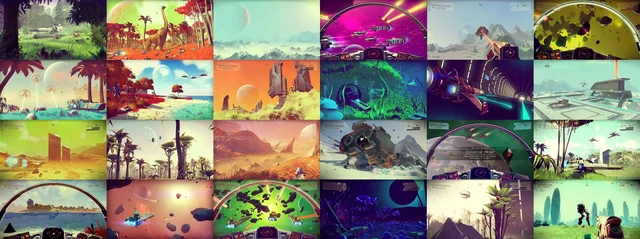
An environment artist can have effectively full creative freedom to create whatever worlds they so please, but at the same time, they have to keep churning out planet styles and biomes, which can very quickly lead to burnout and a creative block if not handled properly.
Subnautica
Subnautica is a game where you crash on an alien planet covered in water. You must explore the depths and scavenge for materials to create a rocket to go home. This game does not use procedural generation like No Man’s Sky; instead, every piece of foliage is hand placed by an environment artist.

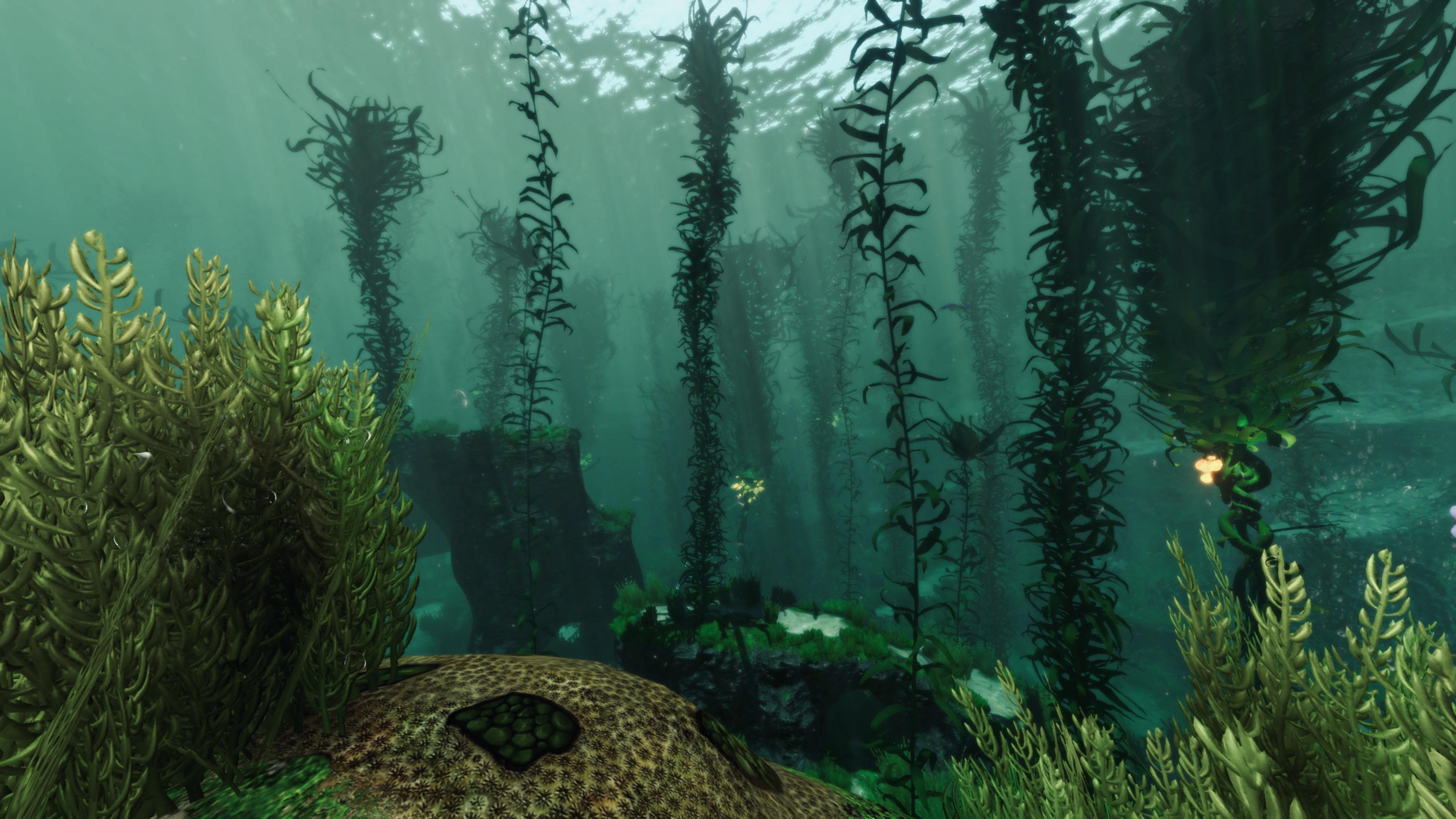
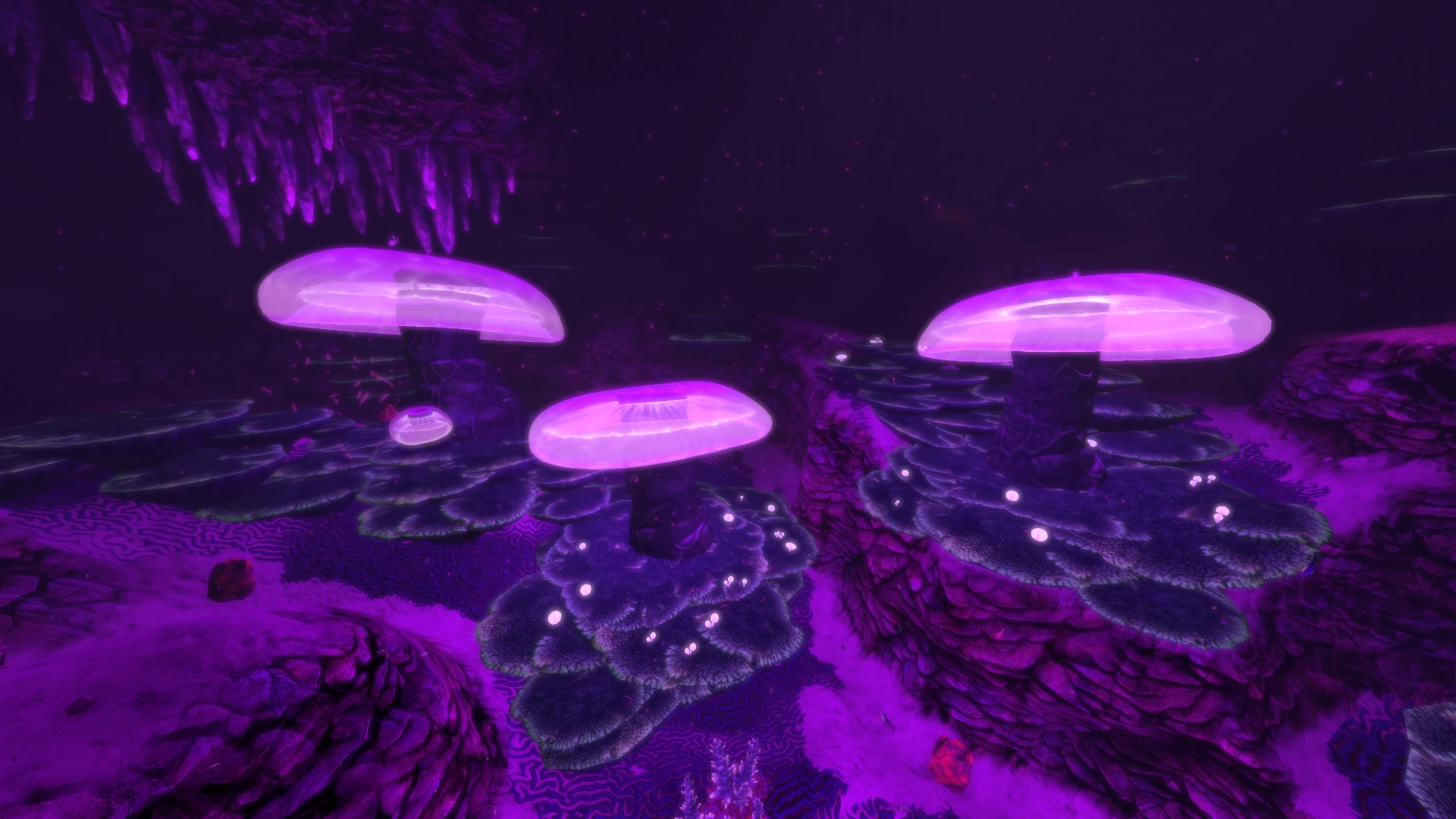
Subnautica is a game that perfectly captures the beauty of the underwater while also capturing the aspect of the unknown. As you navigate further down, the environment gets darker and darker, creating a more sinister tone and mood compared to the bright and vibrant environment higher up. The environment is scaled to be very large compared to the player instead of very small, creating a sense of something larger than you that you are unaware of. The environment also has a heavy usage of fog which helps with this presence of the unknown.
Visual Effect Artist
A visual effect artist creates any moving effects in the game that are typically purely cosmetic. A VFX artist must be able to envision how an effect should look like, create any necessary models in Blender, and know how to implement it into an engine. VFX artists work with almost every person involved in a game. They must work with the game programmers to help create a visually appealing aspect to accompany their programming. They also work with environment artists to add moving elements to the game to create atmosphere and immersion, such as a dust or sand effect in a desert, or fog in a dimly lit street.
Visual effect artists must have good knowledge in software such as Substance Designer, Photoshop, Blender and a game engine like Unreal. They should also have good knowledge of mathematics.
Examples
Cat Mushroom Cloud - trommel.bsky.social
This effect uses a mix of different smaller touches to create one large effect. From this, I can notice the circles around the impact point prior to impact indicating the location, followed by a quick white glint and some impact framing to help show how powerful the nuke was. This is then followed up by 3 or 4 omnidirectional blasts in different direction to indicate the wind, heat, damage and various extra details, accompanied by more flat circular blasts rising up to indicate air blasting away with the core piece, the mushroom cloud of a cat rising up and fading, leaving a black scorch mark on the floor.
Link
Elemental Beam - lobsterwizard.bsky.social
This effect uses a mix of particles homing onto a specific location as a buildup and a small wind spiral underneath, followed by a lot of impact frames and camera shake, creating the image of lethality and power before the bright solid beam surrounded by ribbons and panning textures has even come into frame. The enemy has an effect similar to a meteor coming into orbit around it which creates the illusion of massive damage onto it before slowly fading out.
Link
Various Fortnite - tuatara.bsky.social
Tuatara is a company that creates VFX for games like Valorant, Fortnite, Godfall and Hyper Light Breaker. In this video, they showcase various effects, such as the charge up and futuristic style particles of this Fortnite skin changing to equip a helmet and some armour, the goo materials on this pickaxe and back bling, as well as a very nice looking contrail using a blue to purple gradient ribbon.
Link
Software to Learn
There are a number of software to learn in the industry depending on the role you want to pursue. Some of these software are:
Game Engines
Unreal (C++, Blueprints/Visual Scripting)
Unreal Engine is one of the engines for multiple fields such as filmmaking, architecture, and games development. It is seen as a very professional industry standard engine and is used by a lot of game studios and film studios to create their works. Unreal features two primary ways to create things in it, those being C++ and their visual scripting language, Blueprints.
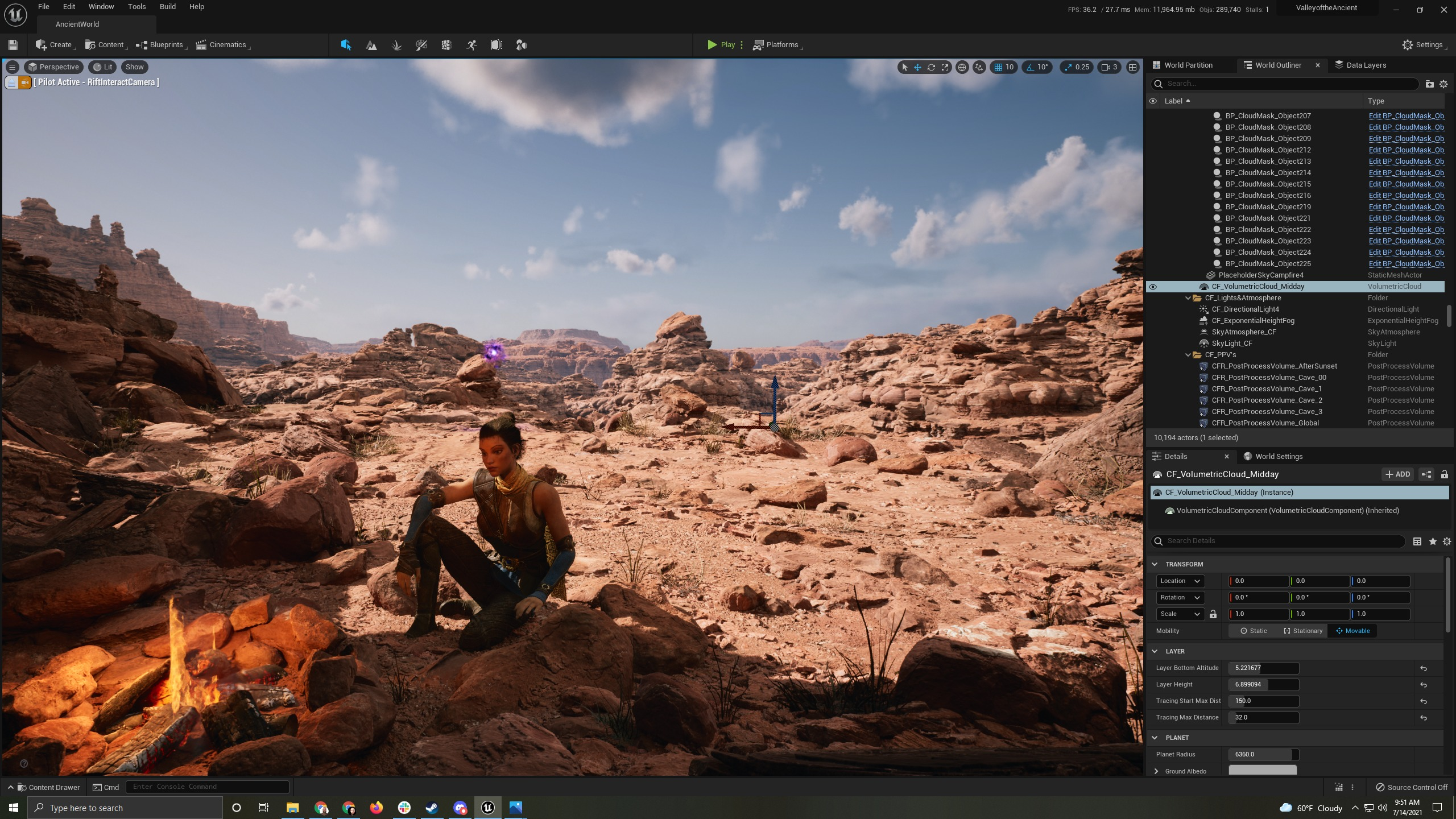
Blueprints are used primarily for an introduction to Unreal, and is a very good starting point for people who know little to nothing about programming. Blueprints are also the default for any VFX, Material and Niagara systems. They aren’t as powerful or as performant as writing raw C++ code, but it’s a whole lot easier to create prototypes and quick concepts in. Unreal also has a very intuitive level designer which can create very beautiful maps with it’s landscaping mode, foliage painter, and it’s post processing volumes. Unreal also has a marketplace which can be used to gather asset packs which can speed up development even more.
Unity (C#)
Unity is the other industry standard game engine alongside Unreal. Unity grew primarily from its ease of use compared to other engines during its lifespan, along with its ability to cross compile to multiple platforms such as Android and iOS, which made it very popular for mobile game development, while also having PC and Console support. Unity uses C# compared to C++ which has an easier learning curve and has a built in memory management.
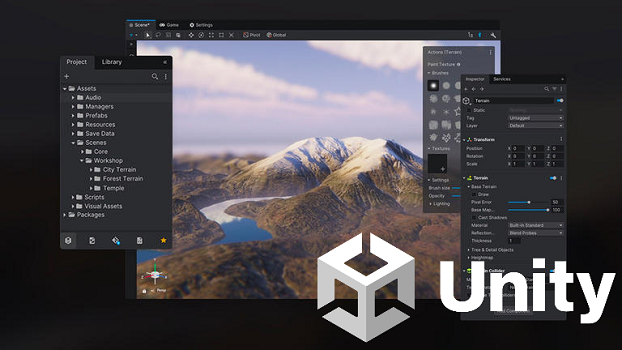
Unity has lost a significant portion of their userbase compared to their peak after proposing a runtime fee, which meant that there was a £0.20 charge for every install of a game which reached £200,000 in revenue, and 200,000 downloads, which led lots of indie developers to migrate to Unreal, Godot or GameMaker. They’ve since backtracked after harsh feedback, but have lost a lot of users.
Godot (GDScript, C#)
Godot is a rising competitor in the game industry, featuring an easy to learn, and very powerful scripting language called GDScript which is syntactically similar to Python, another easy to learn language, where code is indented and typed. Godot also has support for C# alongside GDScript, which can create a more seamless transition from Unity which helped boost their growth even more when Unity’s users migrated over due to proposed runtime fees.

GameMaker (Visual Scripting)
GameMaker is a game engine which never grew as popular as Unity or Unreal, but still saw some sort of market usage. It supports exporting to various platforms, including PS4/5, PSP, Xbox One, PC, HTML5 and mobile. GameMaker is primarily focused around 2D graphics, with support for raster and vector graphics, as well as 2D skeletal animation through Spine.
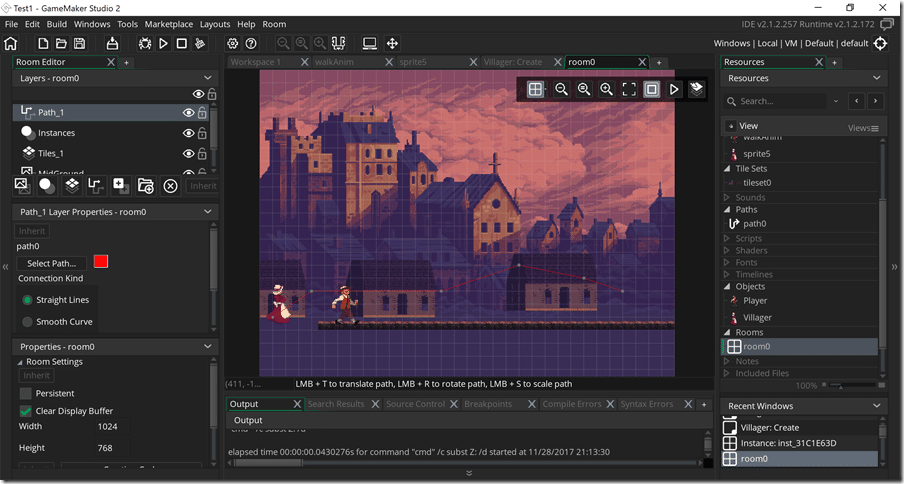
It has a drag and drop visual scripting language similar to Unreal Engine’s Blueprints, with an option for its proprietary Game Maker Language (GML) for cases where you need custom code that can’t be done through the visual scripting.
Löve (Lua)
Löve is a framework written in C++ designed for developing games. Löve uses Lua as it’s scripting language, with many other libraries to extend this scripting functionality, such as love.js to let games run in the web, as well as Lutro, which allows for Löve games to run in libretro/RetroArch, a popular and powerful emulation frontend. Löve has seen lots of popularity among game jams and is ranked as 10th most popular game development software on itch.io. The most notable game of recent times is Balatro, a Game of the Year nominee.
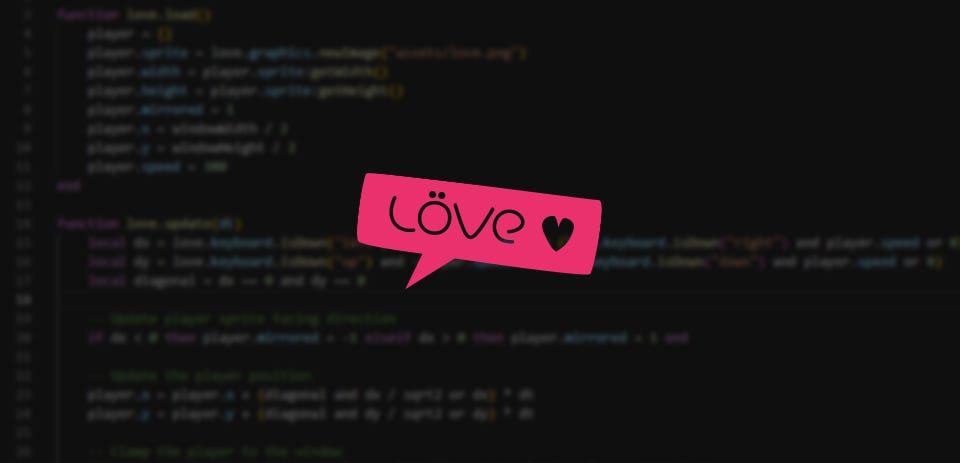
Visual Effects
Substance Designer
Adobe software is generally considered the industry standard for basically every industry to use a computer. One useful software they own is Substance Designer. This powerful tool allows you to create textures for use in Blender, Unreal, Unity, or anywhere you make visual effects. It uses a visual node system, which shows what each step changes from the image, allowing for fine tweaks along the way without needing to fully rip something out to fix one tiny messed up part.
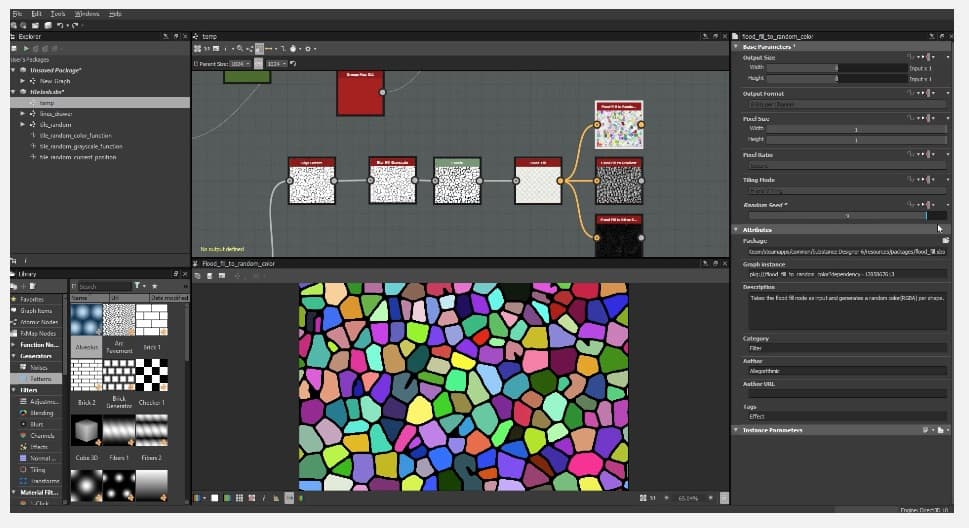
Photoshop
Another piece of Adobe software that is used a lot is Photoshop. Photoshop has such a wide usage both in and outside of the games industry that it’s something to learn in general regardless of the role you want to go into. This allows you to take a photo and edit just about every part of it. In a visual effect artists role, they often use Photoshop to edit their textures to add elements of opacity to it, such as a splatter pattern with faded edge. It can also be used to create 2D visual effects which can look stunning.
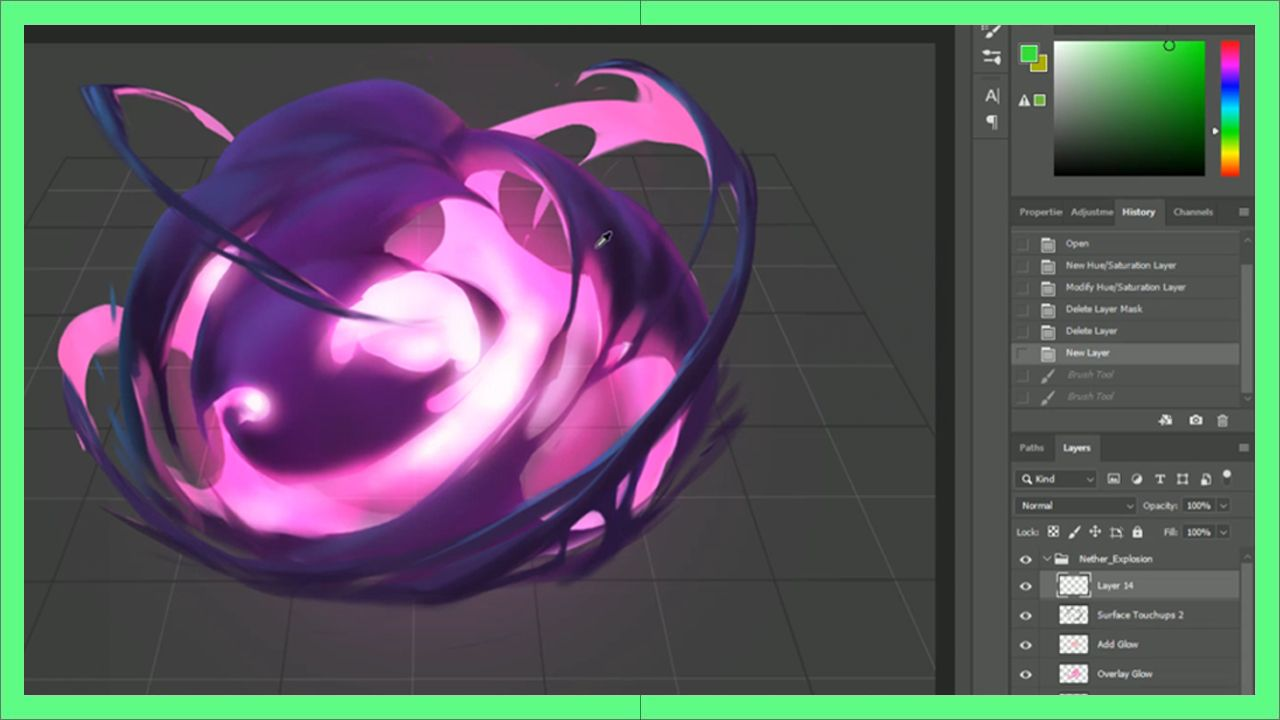
Blender
Blender is a 3D modelling program, and is considered an industry standard alongside 3DS Max and Maya, but with the upside of being 100% free and open source. Blender has a whole roster of features, such as sculpting, non-destructive modifiers, a modelling mode, geometry nodes for procedural manipulation of geometry, as well as simulations of fluids, cloths and rigid bodies. Blender is used by visual effect artists to create any meshes needed for effects, such as icicles for an ice spike attack.
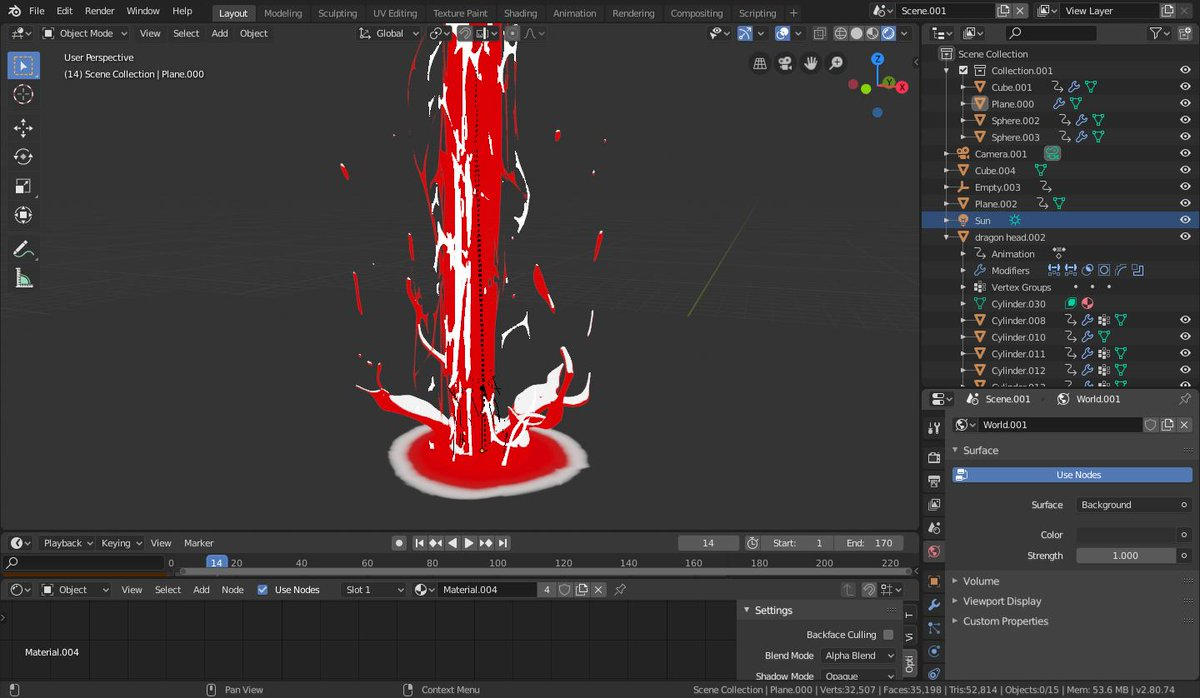
Professional Marketing/Portfolios
This section covers various sites useful for showing off your work depending on your role.
Profession Independent
ArtStation
ArtStation is one of, if not the most popular/professional sites for posting art of any sort related to games. This can be anything from 3D art to concept art to visual effects, if it’s visible, it can go on this site. ArtStation was made in 2014 and is owned by Epic Games. It also features a job hiring section on site, which allows for members to highlight specific pieces of work and post themselves as a freelance, an artist looking for a permanent job, or for an employer to post hirings.
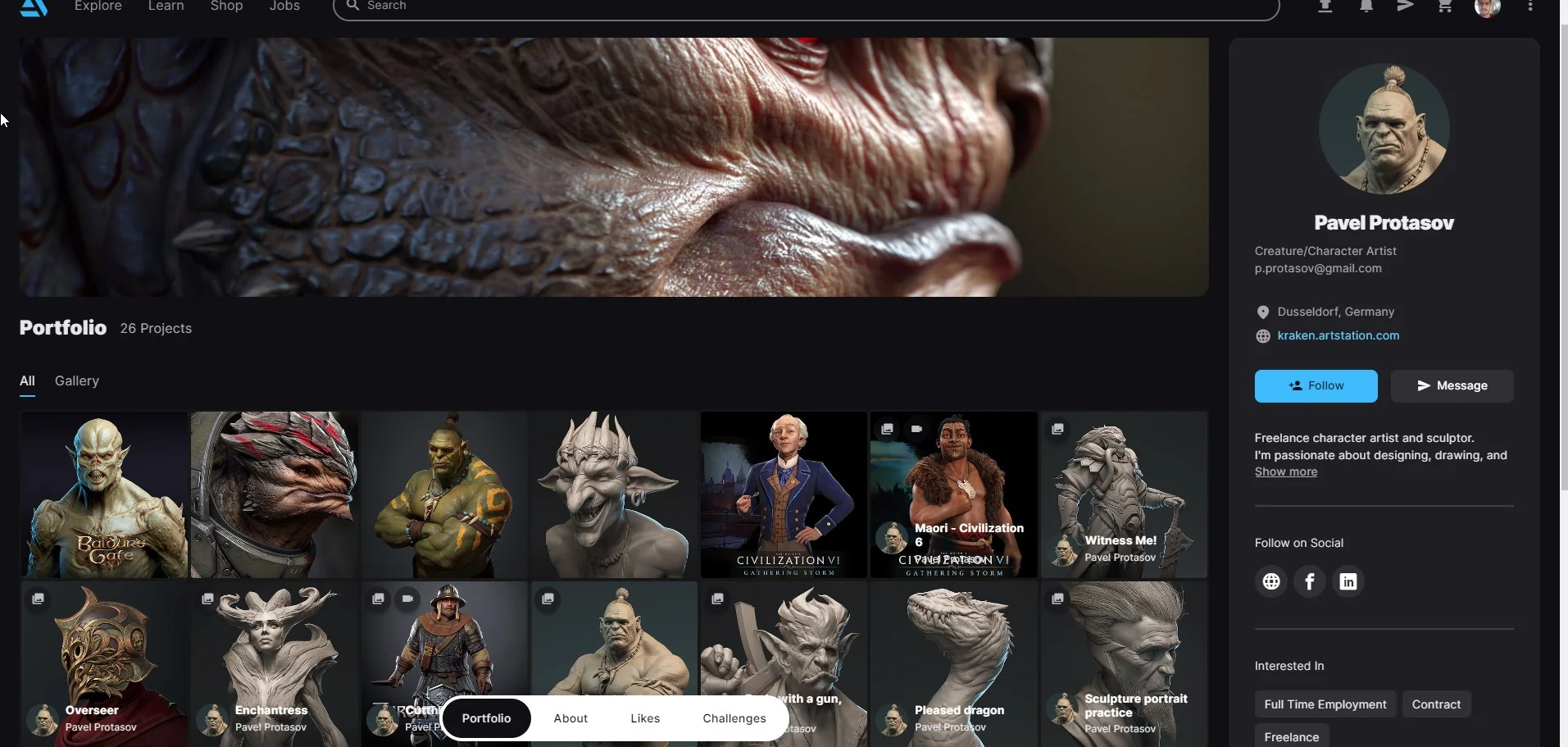
LinkedIn is the more traditional professional site next to ArtStation. LinkedIn has been around since 2003 and was made for professional networking and career development rather than showcasing work like ArtStation was. LinkedIn is used in the games industry a lot to post works of any size or shape; you just made a new mechanic and want to show it off, why not post it on LinkedIn and show all of your industry professional friends. LinkedIn makes most of its money from selling information about it’s members to recruiters, which made up most of their revenue from 2015. This led to them being bought out by Microsoft in 2016.
X
X, formerly Twitter, is a social media site which has been around since 2006, used for sharing short posts, images and videos called Tweets. Using these, people have typically shared updates on any games they’ve been working on, any cool visuals or anything that might be interesting for people to look at. However, since being taken over in 2023, the site has went downhill fast with little sign of it’s former glory coming back due to rampant AI usage, along with an altered algorithm to boost these AI posts, along with political media to users who don’t engage with that style of content.

Bluesky
Bluesky is very similar to X, but if it was better. Bluesky uses the AT(@) Protocol, which is used to create a decentralized and scalable online ecosystem, one online identity for multiple platforms and services. Bluesky features feeds, which select posts based on words in them, specific users, or a certain hashtag being used in them, such as #gamedev being used to boost a post into most game development feeds.

Feeds are all hosted by a user rather than being controlled by the Bluesky team. This leads to more freedom over what content can and can’t be shown on a feed. It also reduces the chance of seeing irrelevant posts in certain ‘niche’ feeds compared to feeds with a broad meaning, such as Software development being anything from application development, game development, or web development.
Personal website
Arguably the best and worst place to show off your work is a personal website. It has the pros of being all yours, you have full control and can truly show your true colours and work on the site, but with the cons of needing to be posted anywhere to get eyes on it, only you can tell people it exists, there’s no algorithms to boost its visibility unless you put the site out there.
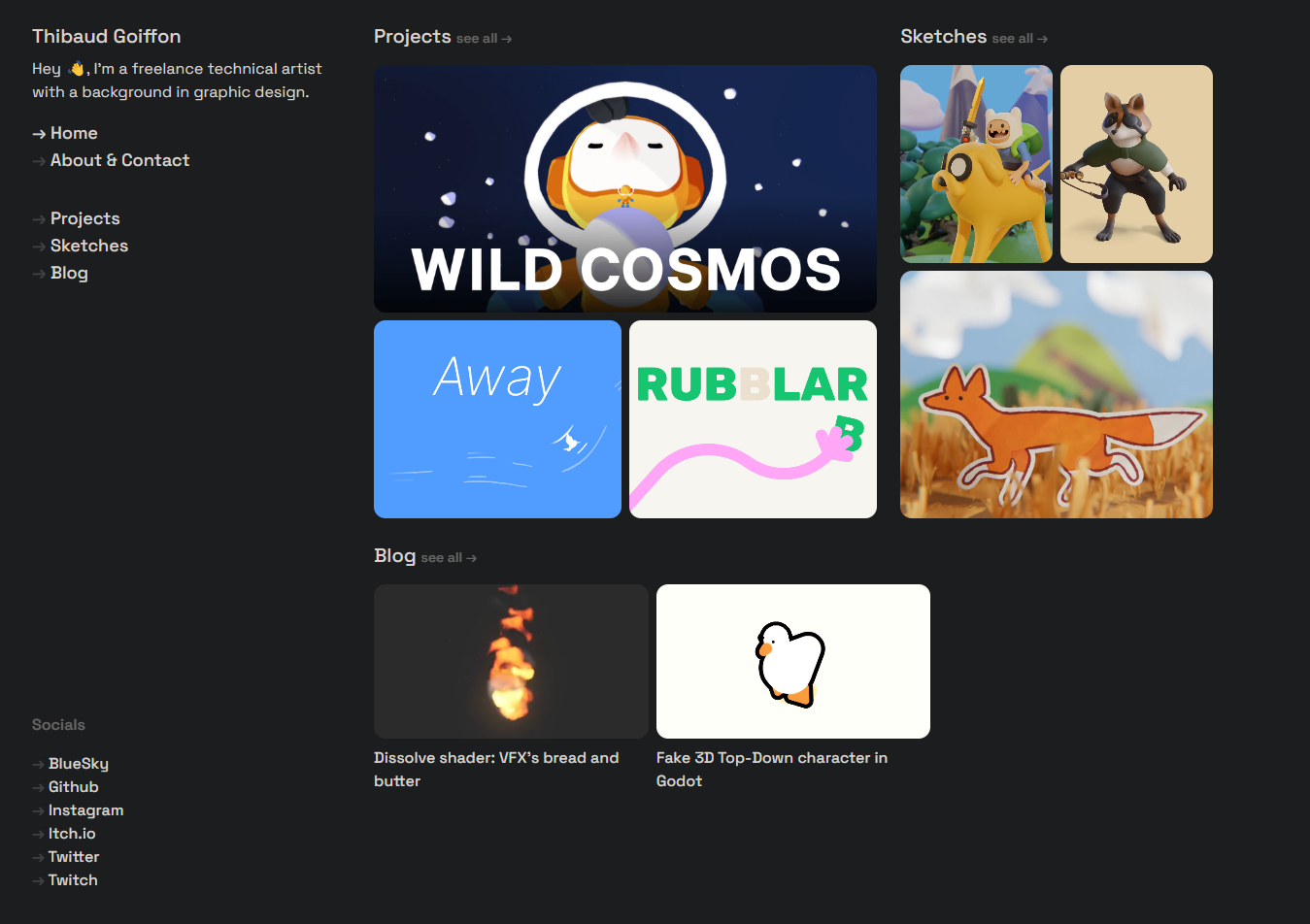
Games Programming
Itch.io
Itch.io is a great place to post any games programming work that you’ve done, or any assets (typically 2D) that you’ve created and want to share for others to use. Itch often hosts game jams, as well as giving you your own personal profile page to customize fully to showcase your game jam submissions and other game releases on there.
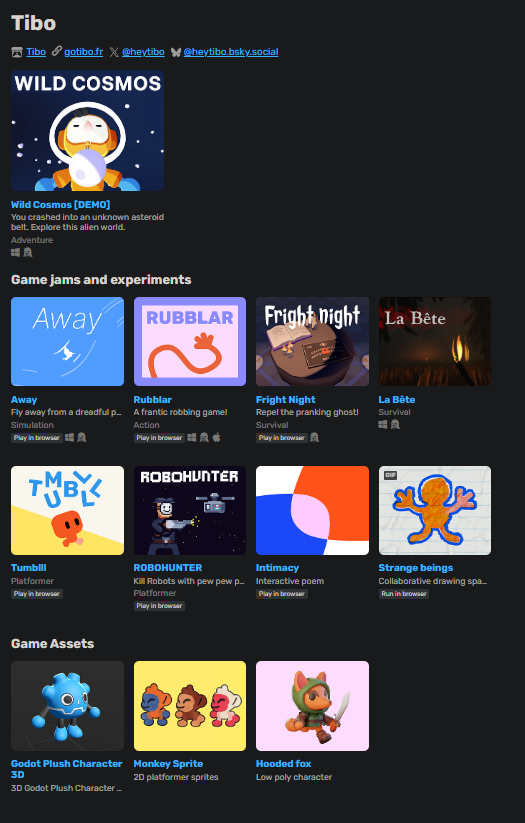
GitHub
GitHub is another site aimed more for code hosting rather than uploading builds of games. It’s useful for open sourcing games or decompilations though, with decompilations of The Legend of Zelda: Ocarina of Time, Super Mario 64 and Lego Island all being hosted there. It’s also good for any games made with frameworks like Löve, raylib, pygame or Phaser.
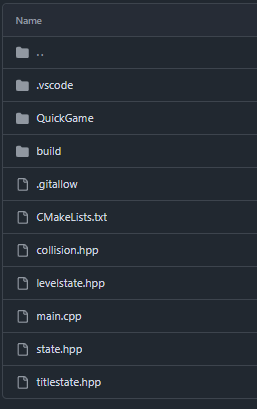
Visual Effects
Realtime VFX
Realtime VFX is a site I recently discovered which houses some of the best visual effect work I’ve seen. It has everything from tutorials on every aspect of visual design, some seasoned professionals advice on how to do things in Unreal or Unity, and it doubles as a place to showcase your works to other people who enjoy making VFX work and can offer advice on how to make it better.
Marketing
Reddit is a site with a ton of varied communities, one of which being r/games, which has an event every Sunday where you can promote your game, called Indie Sundays, as well as once called r/theMakingOfGames, which allows you to promote your game, as long as you show the making of it, iteration and improvement.
Steam
Steam is another good place to market your game. Before you start properly marketing your game and releasing it, a Steam store page is a necessity, as people can come here to wishlist the game to keep up to date on any announcements about it closer to the release date.
Reviewing Others
In this section, I will look over professional portfolios for studios/individuals and list what is good and bad about the site and what can be improved.
Portfolio 1 - https://spacesauce.art/ - 3D Art
Starting with Space Sauce, this is a company which creates 3D models for games effectively freelance. Clicking on Gallery at the top brings up a lot of screenshots for their various works on games like War Thunder, Enlisted, Cuisine Royale and DCS World.

This works very well as a layout, and is very digestible. The large logos help to show what the image is for without needing any interaction. The tabs at the top also helps for sorting based on full games, so if you’re interested in exclusively War Thunder works, you can click it to filter.
The only flaw I see here is that the navigation bar at the top inline with the logo is identical to the secondary one. Both lead to the same place, creating redundancy and leaves room which could be used for other things, like shortening the top navigation bar down and adding buttons for social media. Aside from this, the portfolio is very well presented.
Portfolio 2 - https://squiree98.wixsite.com/ewan-squire-portfoli/ - Games Programmer
This portfolio is by Ewan Squire, a graduate from Newcastle University, having studied the “MComp Game Engineering” course. Off the bat, the text on top of the background is already hard to read due to it being white on colours.
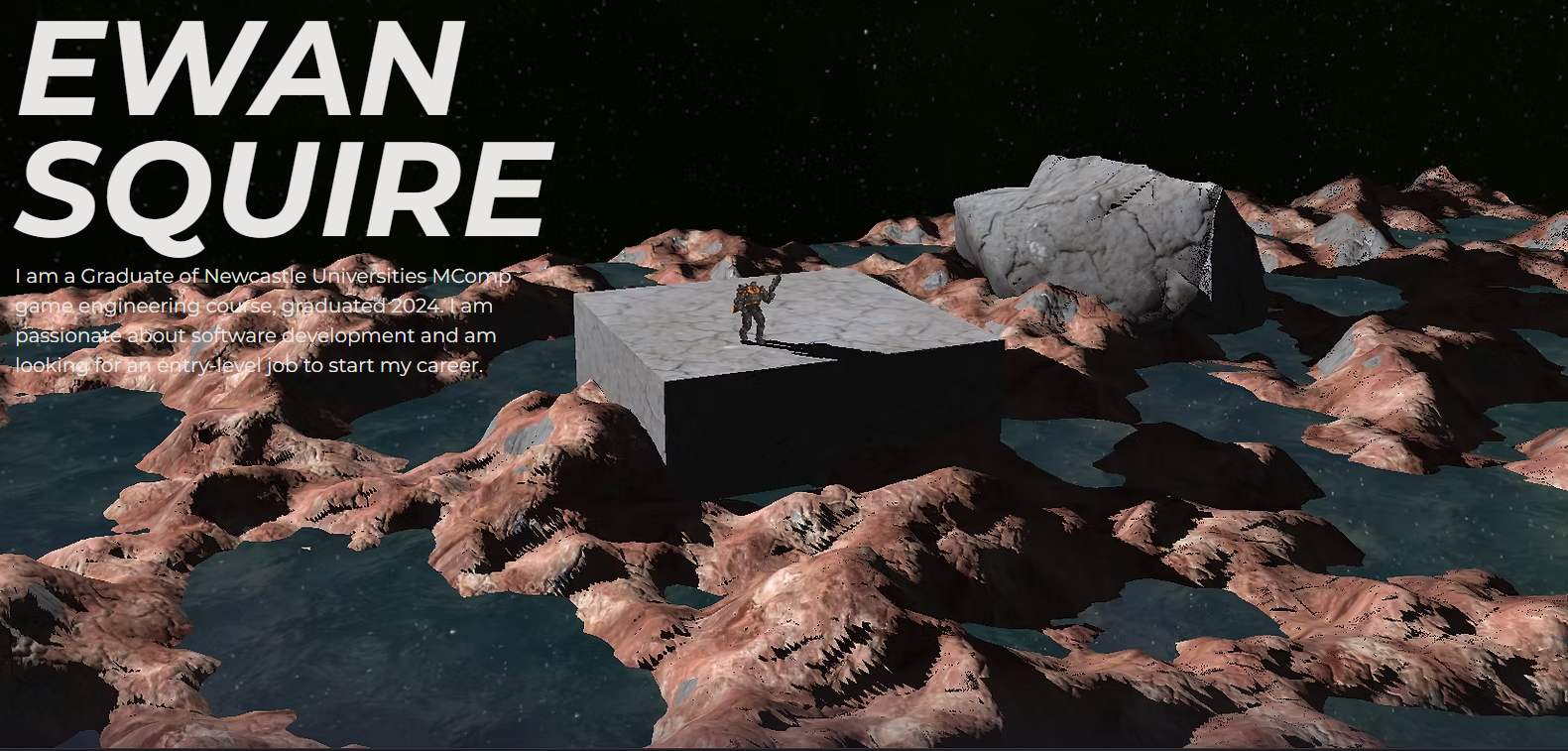
Scrolling down the page, I can see another issue of sorts, being that none of the images are scaled down at all. This leads to them taking up a lot of room on the site; while this is good when done well, it doesn’t help itself when the text is off the screen while the image is on screen. If the image was scaled down and moved slightly to the right to allow for left aligned text, it would look so much better.
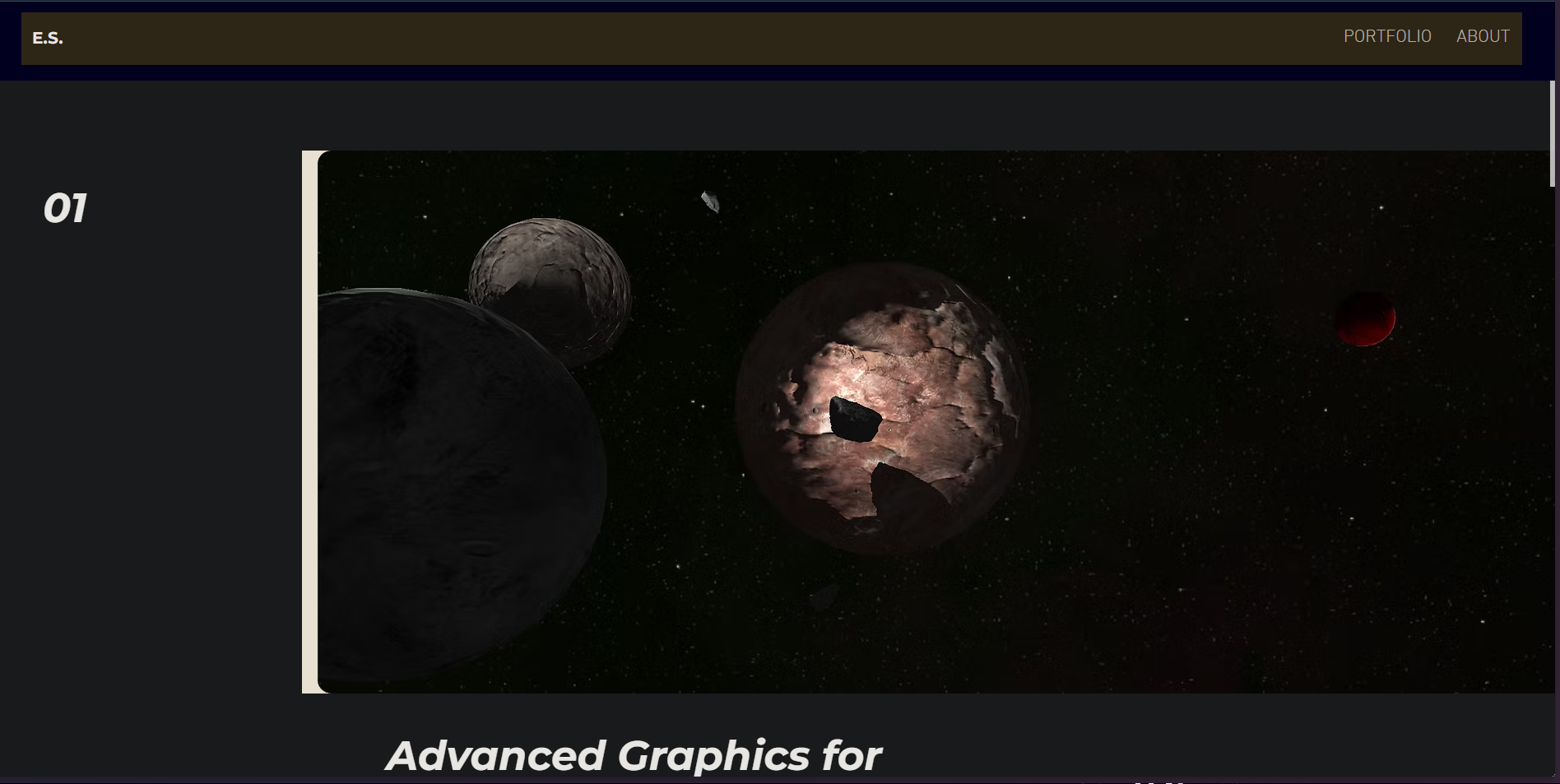
Finally, at the bottom of the page is a big button to view the portfolio, another button to view the portfolio, and a contact page. Ideally, you could scrap the footer navigation bar, move the View Portfolio button to the top of the page in the top right in that first screenshot with the name and text, and maybes link some socials on the header navigation bar.
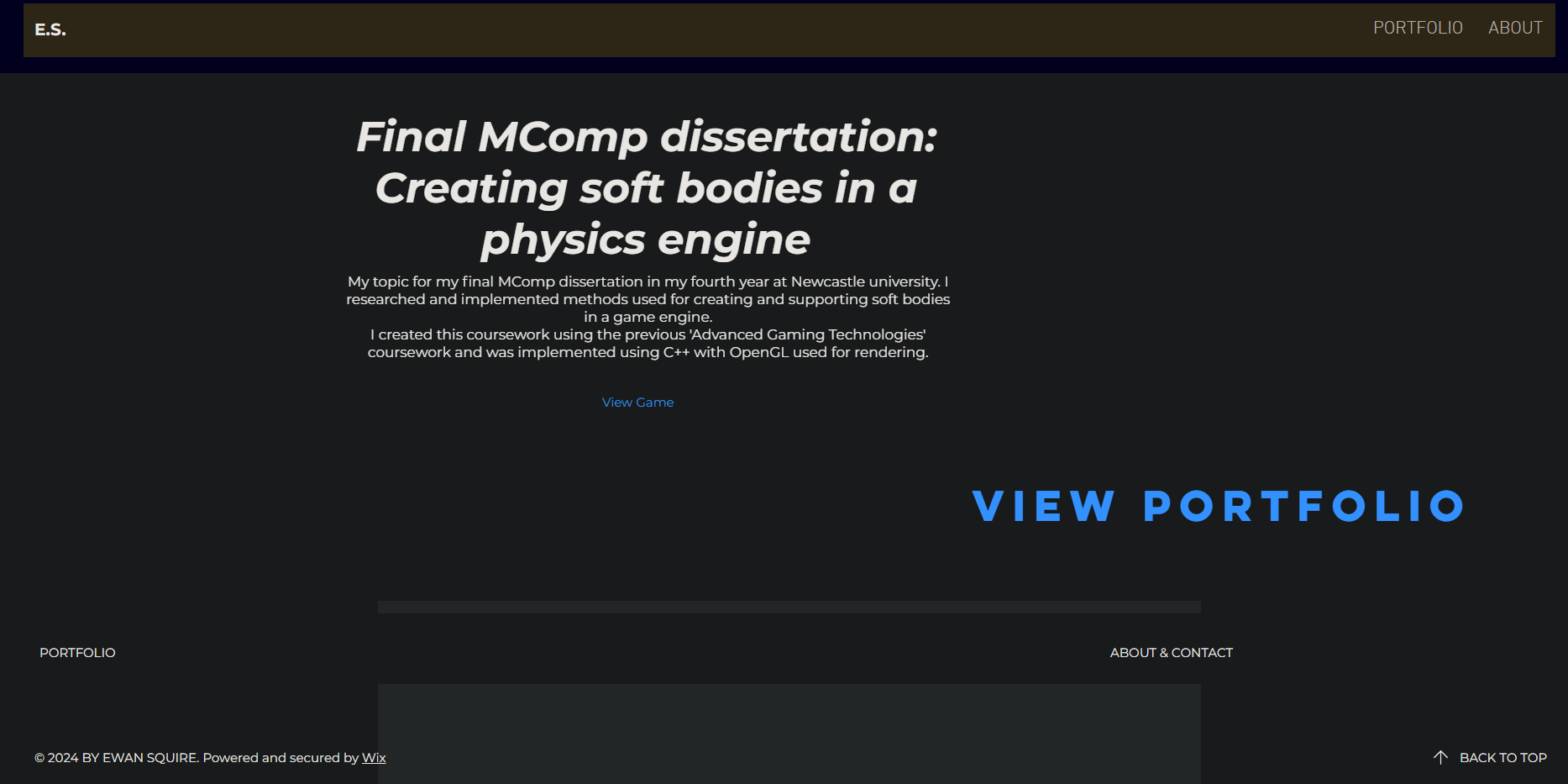
In terms of actual content on the portfolio, all of it is definitely showing the skills off, and all of it is 100% portfolio worthy work.
Portfolio 3 - https://bogdanlupuuk.wixsite.com/mysite/ - Games Programmer
Next is Bogdan Lupu, a recent graduate from the University of Suffolk. As soon as you open the page, the site is very cleanly presented. Everything is where you expect it to be; you have a photo, socials. a little intro and your familiar skills shown immediately to anyone who takes a peek at the portfolio.
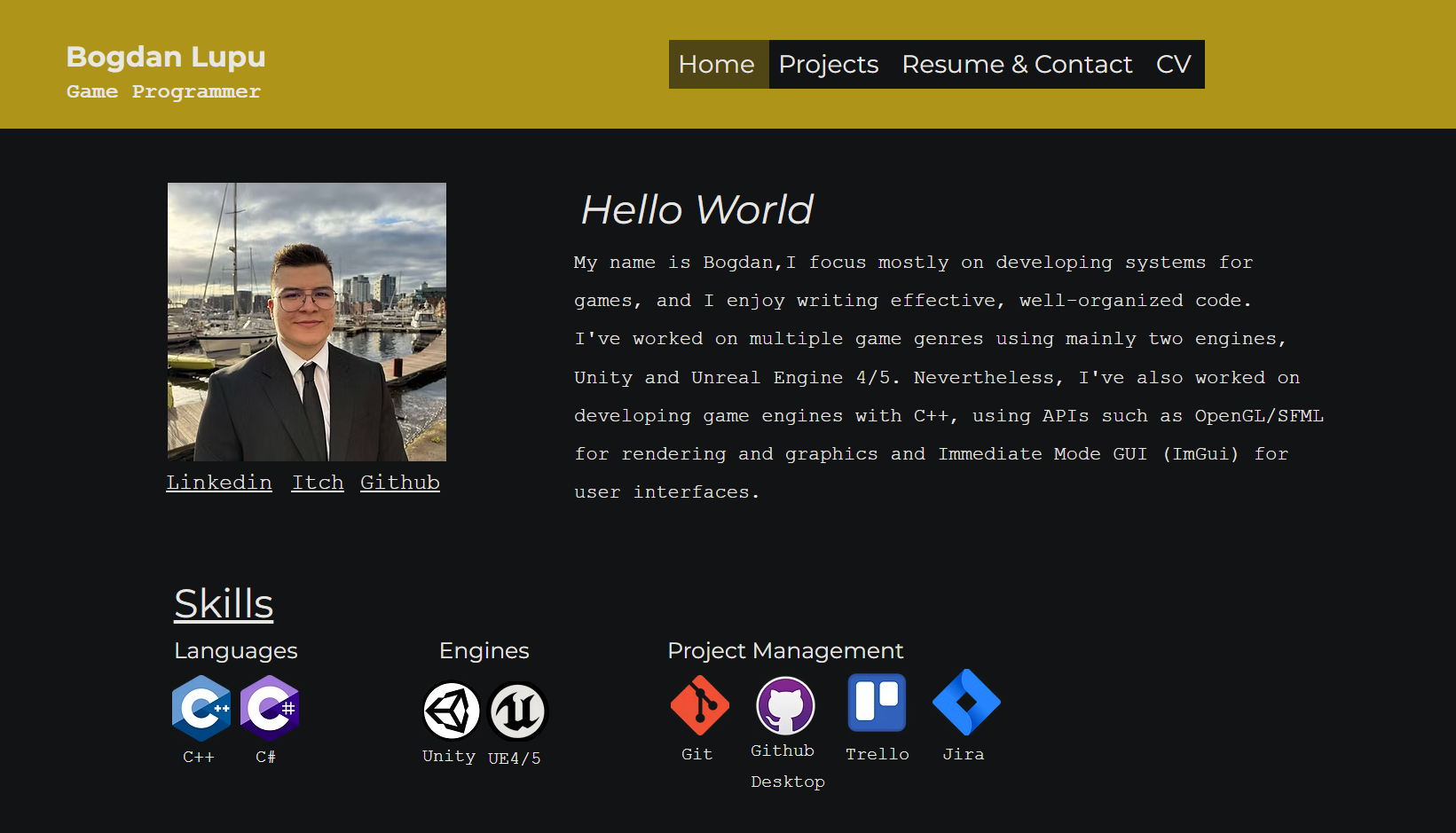
Navigating to the projects tab, you can see 13 projects ranging from a 2D games engine all the way up to demos of games. This is a very impressive display of range and improvement in talent. All of the projects have small entries about them which is perfect to make them quickly digestible. (This is zoomed out to show multiple entries)
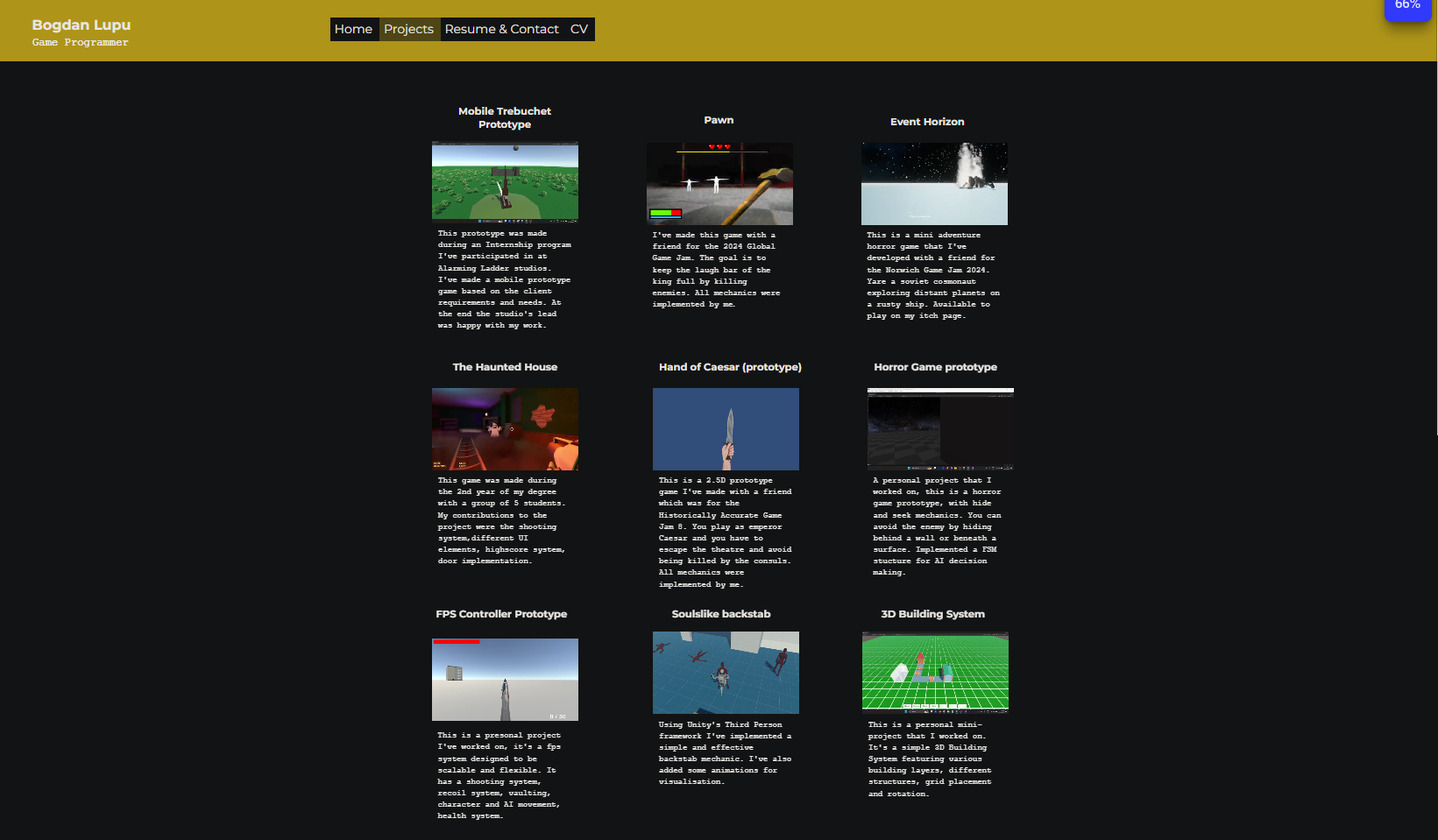
Moving onto the resume/contact tab, I feel like the CV could be tacked onto the bottom or side of this page since it’s relevant, but it’s fine in its own tab. I noticed a few minor typos on both this and the projects page, ‘batchelors’ instead of ‘bachelors’, ‘presonal’ instead of ‘personal’, ‘yare’ instead of ‘you are / you’re’. Aside from that, this display of work is insanely impressive.
Portfolio 4 - https://scottbreen.surge.sh/ - Senior Games Programmer
The final portfolio is from Scott Breen, a Senior Games Programmer currently at Sumo Digital in Nottingham. His portfolio spans multiple companies across a number of years.
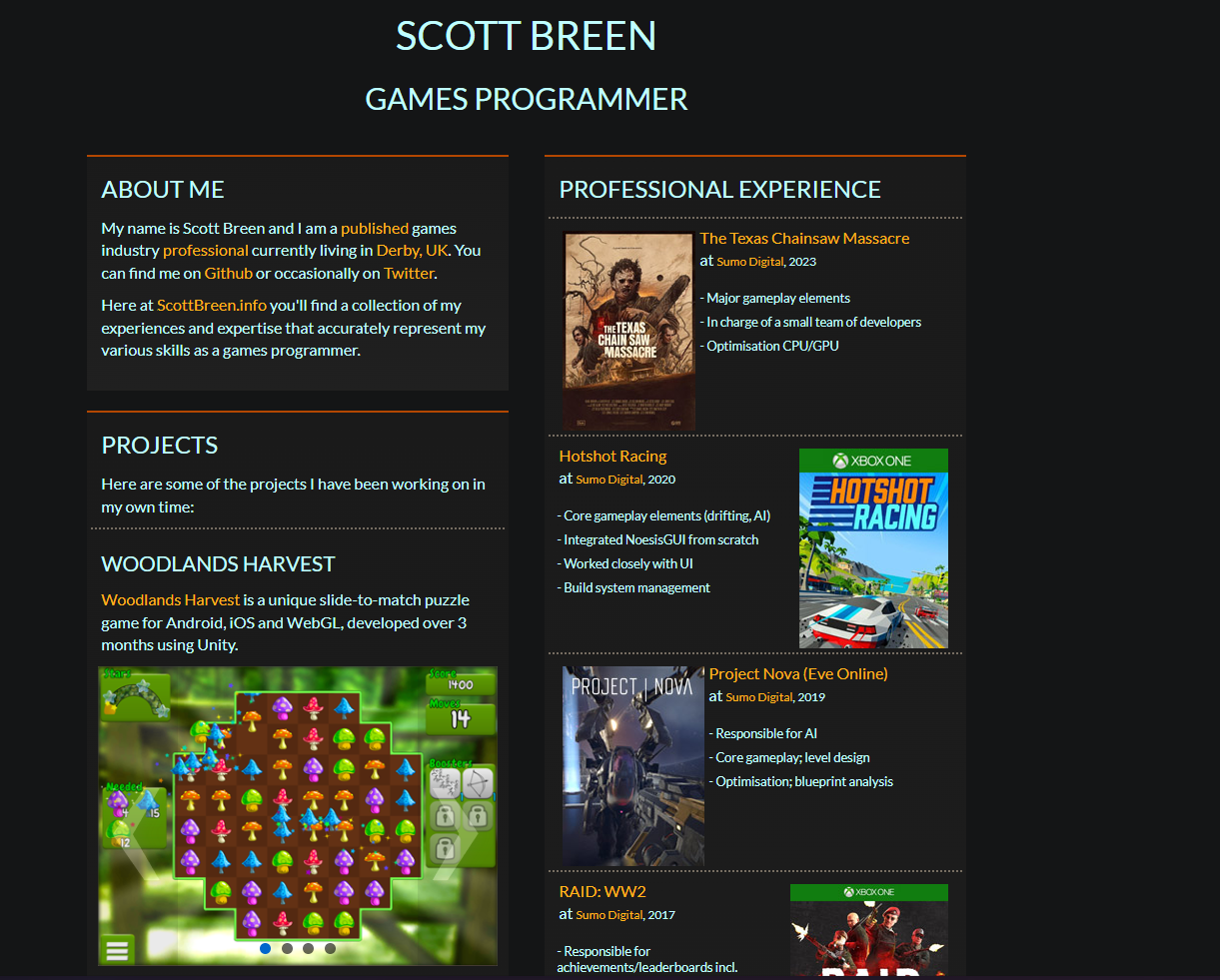
While the visuals of the portfolio is nothing to write home about, the content of it more than makes up for it. This is a single page portfolio which looks good on mobile and PC. It features a small about me at the top, all the professional projects on the right, along with a small bit about education and games underneath, and all the personal projects and ‘toys’ on the left.

There isn’t much to say about this portfolio, everything that is on the portfolio deserves to be there, and I can’t see any bad things about it aside from it doesn’t visually stand out from other portfolios. I would also make it slightly clearer to find any socials like LinkedIn, X, and GitHub.
Career Advice from Professionals
I asked around the few people that I know that work in the games industry, and asked them all the following:
What’s 3 things you would say to someone who’s just starting out that you wish you knew when you started?
Kyle McNally - Games Programmer
- Don’t let perfection be what kills progress. You will find times when you want to tweak and tweak something to get it just right, and it will burn you out. Move on, change tactics, and revisit it later with fresh eyes.
- Let Feedback dictate the details, but not your direction. I would say a great example of this is Death Stranding. A game with time stealing acid rain, floating ghost babies, and your job is to carry packages by hand across a post apocalyptic America? Sounds so outrageous, plays so great.
- Tropes are tropes for a reason. Genres are genres for a reason. Follow your own imagination, but take inspiration from everything and don’t feel discouraged if what you come up with feels too similar to something else.
Kyle has one game available online, Knight Runner which was made in Unity in late 2020, early 2021.

Cuauhtemoc Moreno - Creative Developer and Interaction Designer
- Technology Changes fast, Humanity does not. Soft Skills have been way more important to develop that mastering any system or technology. Striving to be a good communicator, developing more empathy, public speaking, critical thinking, writing well enough, etc. All of those things are what people are going to see more than your technical output. This is even more important now, with the rise of AI systems.
- Make stuff. When hiring in this industry, a portfolio is more important than degrees and educational history. Game Jams, solo projects, experiments.. it’s all great not only to show what you have learned, but also to keep developing your own creative and technical skills.
- Don’t ignore the games-adjacent spaces. I work at a start-up that does a medical device that is also a game. Everything from architectural visualisation, to journalism web playables, to applied gaming, to archival curation, to local city projects. Game ideas and techniques are way broader than just entertainment and product games! And that’s an awesome thing.
Cuauhtemoc has created and assisted numerous works, such as Sound Scouts, a hearing test mixed with gameplay aimed for young children, where he currently is CTO, a game called Amberial Dreams, a sandbox arcade platformer, as well as projects for game jams as well as fully realised games. A full list of their work can be seen on their portfolio, oddgoo.com
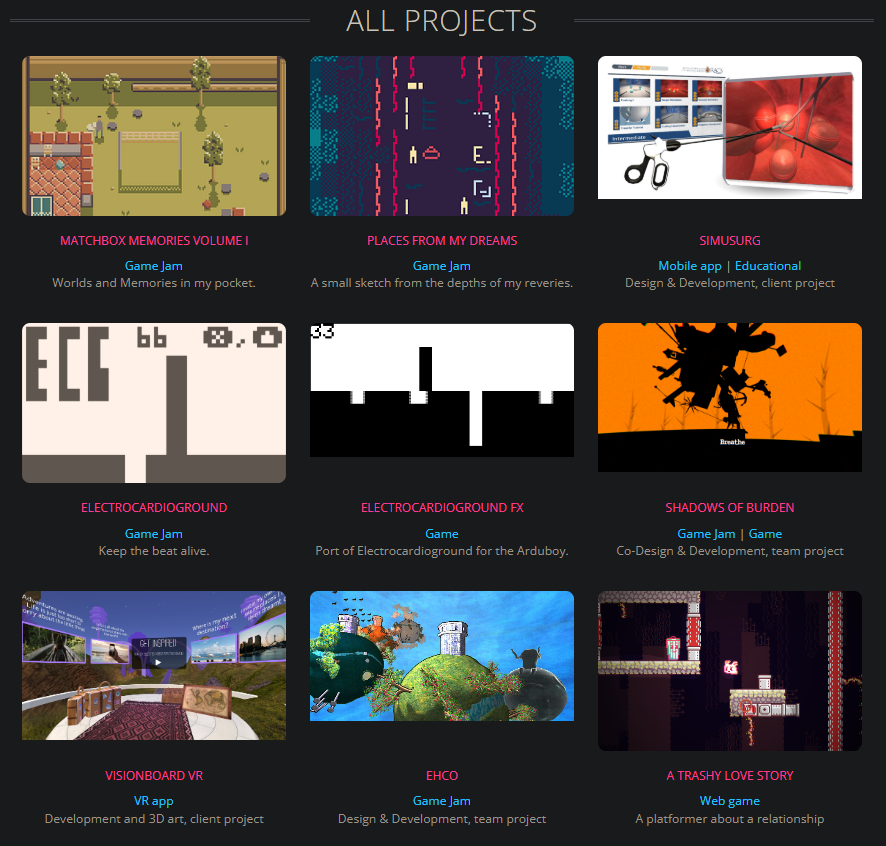
Bilal Adham - Games Programmer
-
Focus on the fundamentals. My first game, I wasn’t set on what kind of game I wanted to create so I started with the main menu, but I should have just started with the game objects and player character since that is what most of the game is focused on. I also didn’t do much research so my game ended up not using a singular game loop, delta time, or any other basic game principles.
-
Start small. When I began work on my metroidvania, I spent a lot of time brainstorming out a map of the game world and thinking about the mechanics. By the time I completed the demo, I didn’t use much of the ideas and the project as a whole was quite different from my original plan.
-
Don’t expect your game to be a masterpiece. Your first game especially will be riddled with bugs and won’t match up to your vision. The first game that I worked on was pretty enjoyable and I could sink in a lot of time before getting bored. When I released it to the public, it faced lots of criticism and only one other person considered it fun.
Bilal has released a demo for a metroidvania he worked on called Children of the Night. More of his work, such as a Moon Knight homebrew for the Vectrex, can be found on his itch.io page.

Zeth Carmer - Technical Artist & Art Manager
- It’s really who you know. I mean I’ve always heard this and I knew it to some extent. But the game industry is very small and especially in today’s extremely competitive market. You really need to have a connection with someone. That means going to games, conferences or joining game jams or attending other online events. Basically just anything that you can do to make connections. And then keep those connections warm. Set yourself a reminder if you’re not a social person to check in on people every 6 months or so.
- Learn flexible tools. I went into unity, pretty hard. In school. We learned unity and unreal, but at work we only use unity and so I really focused on unity development. When I needed a new job, everyone has basically switched to unreal. I’m sure it will change again to some other engine in the future. So learning languages that are used by multiple programs or even just learning other engines while working is going to be really important.
- Beware burnout. I knew again that this was a thing that happened to people, but I did not learn how to recognize the signs in myself until it was so bad that I could not continue working. Make sure that you take time for yourself and for your own hobbies and generally just try to have a life out of work if you can. If you’re a very antisocial like me, even just setting aside. Rest time to play single player games or read books or whatever it is you like to do. Rest is really important and if you don’t take it eventually your body will force you.
Zeth has a range of work from UI to art design, all featured on their portfolio, zethcarmer.com
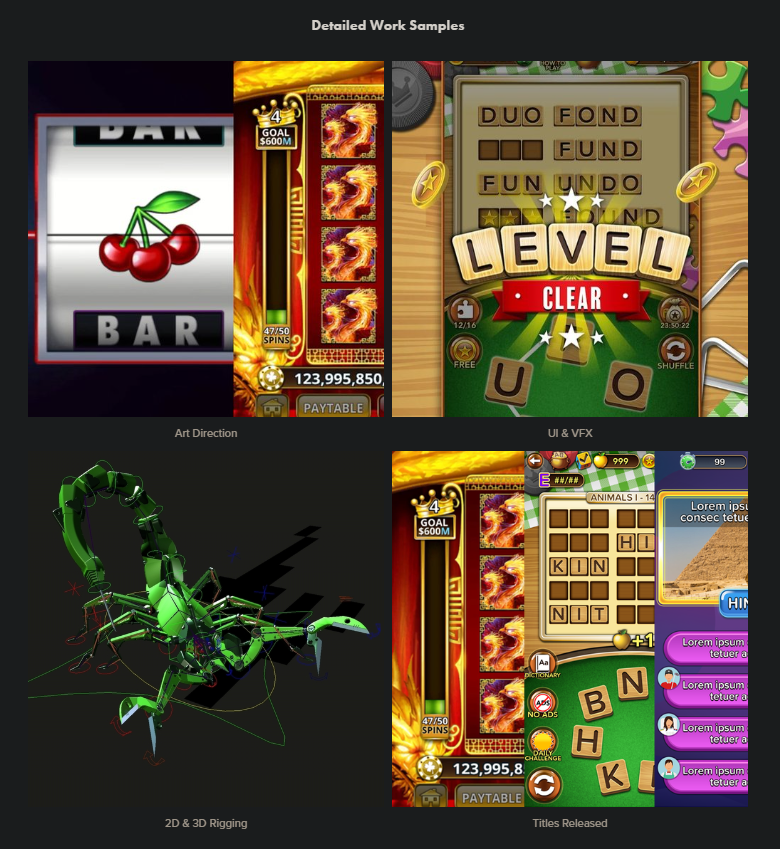
Scott Breen - Technical Owner / Senior Games Programmer
- The stuff we learned at university (Derby University, BSc Computer Games Programming) covered a huge amount of different areas. I’d say I have used around about 10% of it since 2009, and I don’t think I’ll ever use the rest. There was a lot of filler (web-design? really?) that will have very little bearing on what you actually do in your career. However still stick with it all and do your best. It will pay off and that 10% will still be vital.
- That said, to be successful in industry has a lot more to do with your dedication than your knowledge or experience. With regard to a portfolio (vital), 90% of developers have a ‘demo’, 10% have a ‘actual full game with a start and end’. The 10% will stand out because they actually put in the effort to see something through to completion. Make games. Play games. Make all sorts of games, electronic or paper-based and add them to a portfolio. Make small ones, big ones, test them out on old, young, casual and avid gamers. The more games the better, but also actually try to finish making at least half of them. It doesn’t matter if they’re perfect, it matters if they’re complete.
- The games industry is seemingly massive and lucrative but also surprisingly small and close-knit. Don’t burn bridges, you are highly likely to work with the same people again and again in different companies. You are much more likely to get a position in a company if you know someone there who can recommend you, so it’s all about who you know. Make connections and maintain them.
Scott has worked on numerous games over the years for multiple companies, most recently at Sumo Nottingham, but also is the founder of RetroAchievements.org, one of the websites I frequent most, where you can earn achievements similar to PSN and Steam, but for older titles such as NES, N64, Genesis and PS2 games. His portfolio of work can he found here.

Task 2 - Self Assessment and Proposal
Based on research from task 1, and prior knowledge, I feel like a career in games programming is perfect for me to pursue; should this not work out, I can pivot to visual effects instead as that entire paths interests me, just less than programming does.
The end goal is to become a games programmer on some sort of big title, it doesn’t particularly matter what game or what genre, as long as I feel I’ve played a part in the games functioning, I’d be content.
Self Assessment
This is a self assessment on how I feel my key skills are.
| Skills Required: | Good | Unsure | Poor |
|---|---|---|---|
| Creativity | x | ||
| Teamwork | x | ||
| Knowledge on the engine being used | x | ||
| Technical thinking | x | ||
| Logical thinking | x | ||
| Problem solving skills | x | ||
| Communication | x | ||
| Attention to detail | x | ||
| Analytical thinking | x |
SWOT Analysis
Strengths
- My biggest success is probably taking part in the Army Cadets and taking on the rank of a Cadet Lance Corporal, which meant I had some responsibility over other Cadets, making sure they’re doing ok, and ensuring some level of discipline in the detachment.
- I have a First Aid qualification, along with a Level 3 diploma in Games Design and Development
- In college, I have completed Crustacean Elimination as a final project which I scored a distinction on for technical skill. I also work on creating achievements for games on consoles like the PSX, DS, NES, that sort of stuff, which never had achievements unlockable on them, to which I have programmed 2 sets of achievements, one for the DS and one for the PSP, with a third set in the works.
- I have basic knowledge on multiple programming languages, as well as a good understanding of how blueprints work in Unreal Engine 5.
- In terms of soft skills, I can work well in a team, as well as coordinating a team, I believe I am hard working and good at problem solving, both of which come from working in Greggs.
- I’d like to think I am a friendly, funny and approachable person, but I feel like I can come off as too sarcastic sometimes.
Weaknesses
- There have been multiple times I have messed up, I didn’t try much through all of year 1 of college and that was a mistake, I also tend to leave things till the last minute to do them, happens with college and work, I never leave work on time.
- I am not missing any technical qualifications from education.
- I usually tend to avoid prepping food at work unless I am the only person in store purely because I’d rather serve customers. At college. I often avoid doing anything related to 3D modelling as it doesn’t interest me like Unreal Engine blueprints and programming does.
- I have an awful habit of giving out good advice and not following it myself.
- People at work complain every now and again about a bad close, but it’s minor things that ultimately boil down to nothing meaningful
- I could improve my timekeeping
- My next goal in my career is to get a fully functional demo of a game out, which I aim to do by the end of February with an on-rails shooting game made in Unreal.
- I feel like if I enjoy the idea enough, I can put myself to the project and push through to make it.
Opportunities
- A lot of places are hiring for either Unity or Unreal for games programming positions.
- I could improve my skills and increase how hireable I am by making more games. Following the advice of Cuauhtemoc Moreno, one of the industry professionals I asked for advice, making games is one of the best things to do in an industry like this.
- I have been working on making connections by getting in touch with industry professionals around the world, creating somewhat of an acquainted relationship with them.
Threats
- The only person holding me back from making games is me and my own lack of focus.
- The only people who encourage me really is people in my class and myself.
- The worst part of making a game that I really don’t like is the animation stage, since if the animations look janky, it can turn the game from a good one to a less good one.
- Having work also doesn’t help with getting college work done, but I can work around college.
Task 3 - Target Setting
Template
| What do I want to achieve? | |
|---|---|
| Why do I want it? |
| Specific | Measurable | Achievable | Relevant | Timely |
|---|---|---|---|---|
SMART Target 1 - Arcade
| What do I want to achieve? | An arcade capable of playing retro games which the user provides. |
|---|---|
| Why do I want it? | I found this library online, UnrealLibretro, which would allow this to work, and it looks really interesting to work with. |
| Specific | Measurable | Achievable | Relevant | Timely |
|---|---|---|---|---|
| I want to create a 3D arcade which the player can walk around like an actual machine, with all the lights and sounds of the machines. It will feature a mix of games played through Libretro, a wrapper for various emulators to be played on multiple platforms, as well as my own minigames based on arcades, such as a functional slot machine, air hockey table, and a rewards system for any custom machines. | - Get games playable through UnrealLibretro - Make an environment - Make at least 1 functional machine without using UnrealLibretro | The only roadblocks I can think of is burnout, lacking models, or lacking time due to juggling work alongside college. | Making this work would help my understanding of Unreal Engine 5 much greater | This could be done in under 2 weeks |
SMART Target 2 - VFX
| What do I want to achieve? | Various Visual Effects using the UE5 material nodes. |
|---|---|
| Why do I want it? | I saw some videos online of some really nice looking visual effects and I wanted to try make them too. |
| Specific | Measurable | Achievable | Relevant | Timely |
|---|---|---|---|---|
| I want to create at least 3 visual effects using the Unreal Engine 5 material system. | - 3 materials | The only roadblock would be lacking the time due to work. | Making these would greatly help with understanding the material system in UE5 | This could be done in around 2 weeks. |
Todo
- Create SMART targets
- Targets can include recreating game mechanics, making original mechanics, or competing in game jams.
- Only document own progression in tasks, not others
Task 4 - Action Planning
Plans
- Get Unreal Libretro running
- Make an arcade
- Remake Kyle’s Knight Runner game, but in Unreal Engine with 3D graphics.
- Recreate this: https://x.com/i/status/1888223759234158836
- Recreate this: https://x.com/i/status/1887561903251333217
- Recreate this: https://bsky.app/profile/tuatara.bsky.social/post/3lgy2tomnwp22
- Recreate this: https://x.com/Tuatara_Games/status/1877415042859282755
Todo
- Create action plan based on SMART target, breaking down the target even further to smaller goals to guide progression
Task 5 - Promotion
https://portfolio.player.gdn
Planning to remake it with an easier flow, but will do after assignment unless I get time.
Todo
- Create a portfolio site
- Using HTML/CSS instead of a website builder
- Add an image gallery to the top (urgent)
- Promote work created from Task 4 by adding them to the site, as well as promoting on social media, such as X/Twitter, Bluesky and LinkedIn
Task 6 - Reflection
Todo
- Reflect on the tasks undertaken, and come to a conclusion on what you want your career to be basically.
- Do in last few days of assignment for proper reflection.
Backup
Task 1 - Preparation
Todo
- Find career roles including requirements to get the role
- Resources to aid career
- Find a few portfolios and dissect them into positive/negative parts of the site in terms of layout, presentation and relevance of content to job.
- Research methods for continual personal development
- Find advice from professionals about career and interviews
- Research areas specific to games programming
What careers are available in the Games Industry?
There are a number of careers and roles available in the industry, each suiting a different skillset.
Environment Artist
Environment artists play a large part in the creation of the game. They create levels and landscapes for players to run around in. Without a level, there’s no game.
They usually start with 2D art created by a concept artist or level designer, and turn it into a 2D/3D environment, populated with props and models created by themselves, their team, or other 3D artists. They work closely with level designers to work out what needs to be included in the level, ensuring they make the final cut. Environment artists and level designers often have a crossover in roles, however the level designers design the level whereas environment artists create the level.
Environment Artists are recommended to have knowledge of the following software:
- Maya
- Zbrush
- 3dsMax
- Blender
- Adobe Substance Painter
- World Machine / Gaea
- Unreal Engine / Unity / Godot (or any other real-time engines)
Level Designer
Level designers must understand what create goods gameplay and what creates bad gameplay. They must design the levels for the game by taking any specifications of how gameplay in the game works from the gameplay designer, then create levels to allow that gameplay to excel. If they design a level around a mechanic, but the level is not good, it could also make the mechanic look bad.
Level designers have to be good at imagining how the game can play out and the levels can compliment the gameplay. They need to be good at being creative with new challenges and missions, as well as new mechanics to recommend to the gameplay designers.
Level designers are recommended to have knowledge of the following:
- Graphical softwares
- Photoshop
- After Effects
- Illustrator
- 2D/3D animation software
- Blender
- Maya
- 3DS Max
- Houdini
- Aseprite
- Game engines
- Unreal
- Unity
- Godot
- Programming languages
- C#
- C++
- C
- GDScript
Gameplay Programmer
Gameplay programmers are the backbone of the game; without programmers, the game wouldn’t exist. These programmers write all of the backend code which isn’t visible to the end user, but helps shape what they see. Often, they create the various game mechanics (movement, shooting, AI, etc) as well as any interactions the player has with a non-player in game.
Gameplay programmers work together with level designers to bring the gameplay to life, as well as the lead producers to actually figure out what needs to happen, or what needs to change if the idea isn’t viable.
Gameplay programmers are recommended to have knowledge of the following:
- Game Engines
- Unreal
- Unity
- Godot
- Programming languages
- C++
- C#
- Python
- Lua
References
| Site Name | Link(s) | Used for |
|---|---|---|
| ScreenSkills | https://www.screenskills.com/job-profiles/browse/games/art/environment-artist-games/ | Environment Artist |
| ScreenSkills | https://www.screenskills.com/job-profiles/browse/games/design/level-designer/ | Level Designer |
| ScreenSkills | https://www.screenskills.com/job-profiles/browse/games/programming/gameplay-programmer/ | Gameplay Programmer |